Looking for a condiment that leaves every jar on the shelf behind? Homemade Mustard lets you dial in the texture—silky smooth or boldly grainy—while keeping the ingredient list clean and the taste vibrant. With a few pantry staples and a brief rest, you’ll create a versatile spread that instantly elevates sandwiches, dressings, marinades, and snack boards.
This streamlined guide walks first-timers through every step, ensuring perfect results without fuss. Once chilled, your batch of DIY mustard keeps for weeks, ready to add a bright, tangy kick whenever inspiration strikes.
Print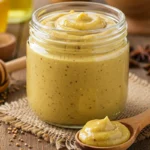
Homemade Mustard Recipe
- Total Time: 10 minutes (plus soaking)
- Yield: About 1 cup
- Diet: Vegan
Description
This homemade mustard recipe is bold, tangy, and easy to customize to your taste. Made with simple pantry ingredients, it’s a perfect addition to sandwiches, dressings, marinades, and more. Whether you prefer smooth, whole-grain, or spicy mustard, this recipe allows you to create a condiment that’s fresher and more flavorful than anything store-bought.
Ingredients
Mustard Base
- ½ cup mustard seeds (yellow for mild, brown or black for spicier mustard)
- ½ cup apple cider vinegar (or white wine vinegar for a milder taste)
- ½ cup water (or substitute with beer or white wine for added depth)
- ½ teaspoon salt
Optional Flavor Enhancers
- 1 tablespoon honey or maple syrup (for a touch of sweetness)
- ½ teaspoon turmeric (for color and mild earthiness)
- ¼ teaspoon garlic powder (for extra depth of flavor)
- ¼ teaspoon paprika (for mild smokiness)
- ¼ teaspoon cayenne pepper (for extra heat, adjust to taste)
Instructions
Soak the Mustard Seeds
- In a medium bowl, combine the mustard seeds, vinegar, and water.
- Stir well, cover, and let sit at room temperature for 12–24 hours. This helps soften the seeds and develop the flavor.
Blend the Mustard
- Transfer the soaked mustard seeds and liquid into a blender or food processor.
- Add salt and any optional seasonings (honey, turmeric, garlic powder, etc.).
- Blend until smooth or pulse lightly if you prefer a grainy mustard. Add more water or vinegar if needed to adjust the consistency.
Taste and Adjust
- Sample the mustard and adjust the flavors:
- For milder mustard, let it sit longer before blending.
- For sweeter mustard, add more honey or maple syrup.
- For spicier mustard, stir in more cayenne pepper or use a higher ratio of brown or black mustard seeds.
- Sample the mustard and adjust the flavors:
Store and Let It Mature
- Transfer the mustard to a clean glass jar with a tight-fitting lid.
- Refrigerate for at least 24 hours before using to allow the flavors to mellow.
- The mustard will continue to develop in taste and can be stored in the fridge for up to one month.
Notes
- Storage: Store in an airtight glass jar in the refrigerator for up to one month. The flavors will intensify over time.
- Texture Options: Blend fully for smooth mustard or pulse lightly for whole-grain mustard.
- Liquid Variations: Experiment with beer, white wine, or fruit juice instead of water for unique flavors.
- Dietary Adaptations: For sugar-free mustard, omit honey and use a sugar-free sweetener if needed.
- Prep Time: 10 minutes (plus 12–24 hours soaking time)
- Cook Time: 0 minutes
- Category: Condiment
- Method: Blended, No-Cook
- Cuisine: Global
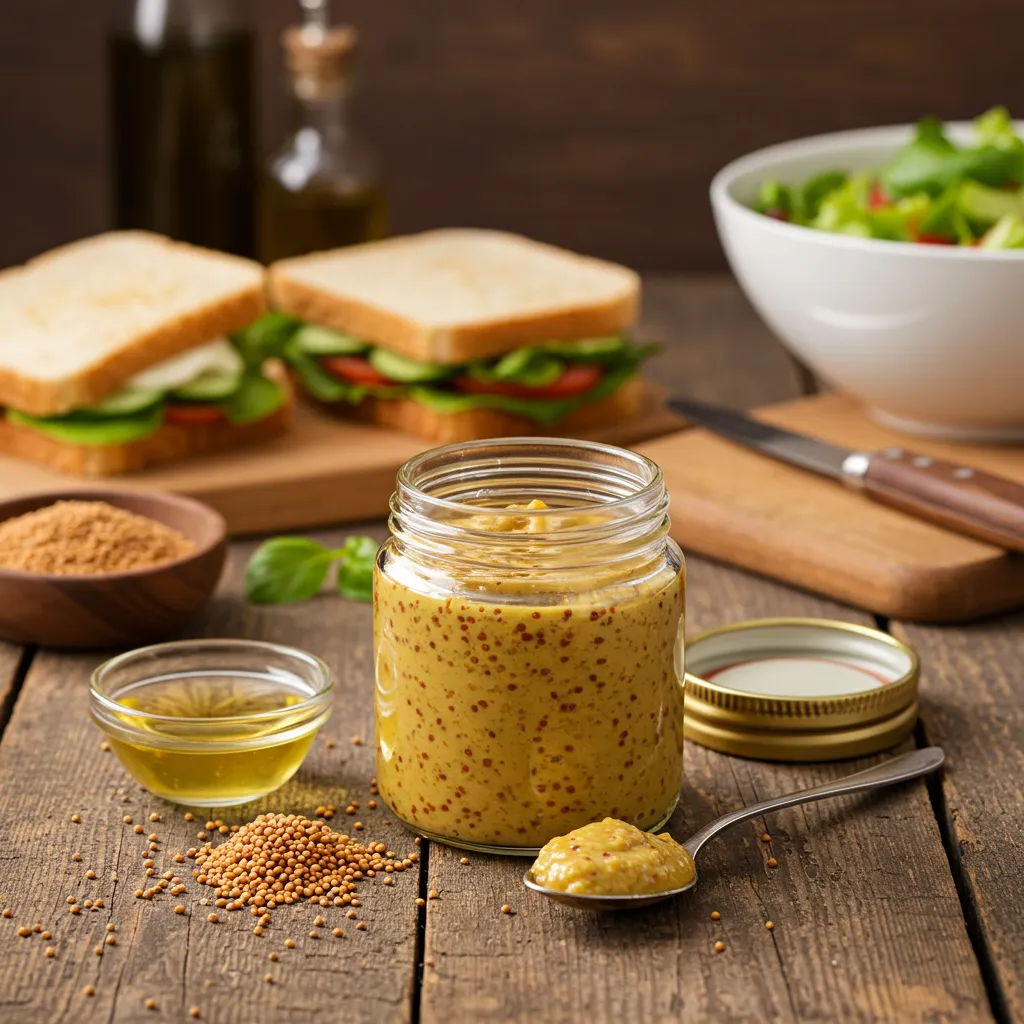
Why You’ll Love This Easy Mustard Recipe
This recipe transforms meals with customizable zing you control from seed to jar. Blend yellow or brown seeds for gentle tang or fiery kick, swirl in honey for subtle sweetness, and choose creamy or grainy texture to match any dish. Why make it yourself? – Tailor heat, acidity, and consistency to taste – Enjoy a short, additive-free ingredient list – Spend minutes, save money, and keep it fresh for weeks – Spread on sandwiches, whisk into dressings, glaze meats, or dip snacks :
1. Simple DIY Mustard with Customizable Flavors
While store shelves offer convenience, crafting Homemade Mustard from basic pantry staples is just as quick, costs less, and keeps your condiment pure and preservative-free.
2. Fully Customizable
Craving more fire? Increase the mustard seeds. Prefer subtle sweetness? Stir in honey or maple syrup. this sauce keeps every ingredient in your hands, letting each batch taste exactly the way you like it.
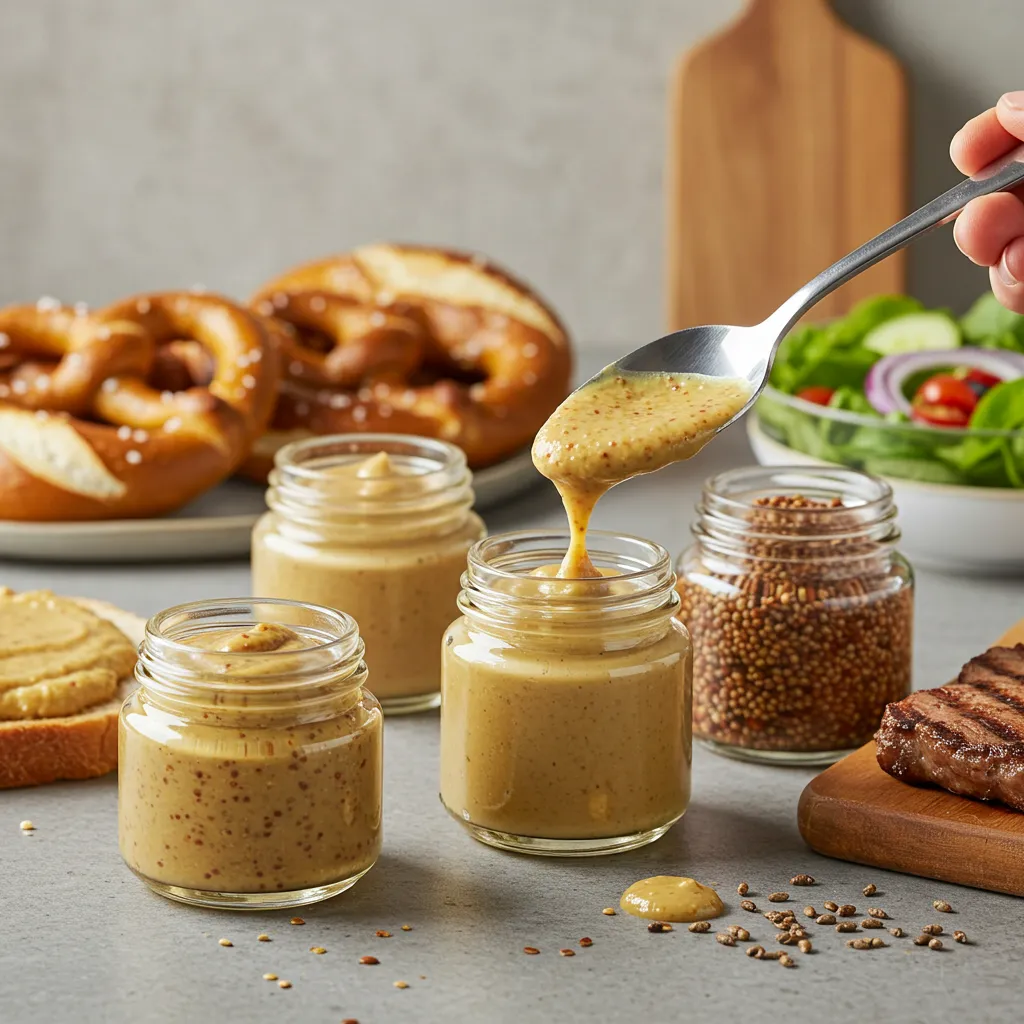
3. Homemade Mustard: A Healthier Swap for Store-Brand Jars
Commercial jars often pack artificial preservatives, extra salt, and hidden sugars; crafting DIY Mustard lets you skip those additives and savor a clean, natural spread—an approach from Harvard T.H. Chan School of Public Health.
4. Versatile and Delicious
Homemade Mustard isn’t limited to sandwiches:
- Whisk it into salad dressings or marinades
- Spread a tangy layer on burgers, hot dogs, or wraps
- Serve this recipe as a lively dip with warm pretzels or roasted veggies.
- Blend Homemade Mustard into meat and seafood glazes for an instant flavor boost.
5. Long-Lasting and Easy to Store
Homemade Mustard only improves with age; seal it in the fridge and, over weeks, watch its flavors deepen into a richer, bolder spread. Crafting it is quick, rewarding, and an instant upgrade for everyday meals—ready to start? Gather these simple ingredients next.
Ingredients and Substitutions
Preparing Homemade Mustard takes just a few common pantry staples, each chosen to fine-tune the ideal mix of heat, texture, and bright tang.
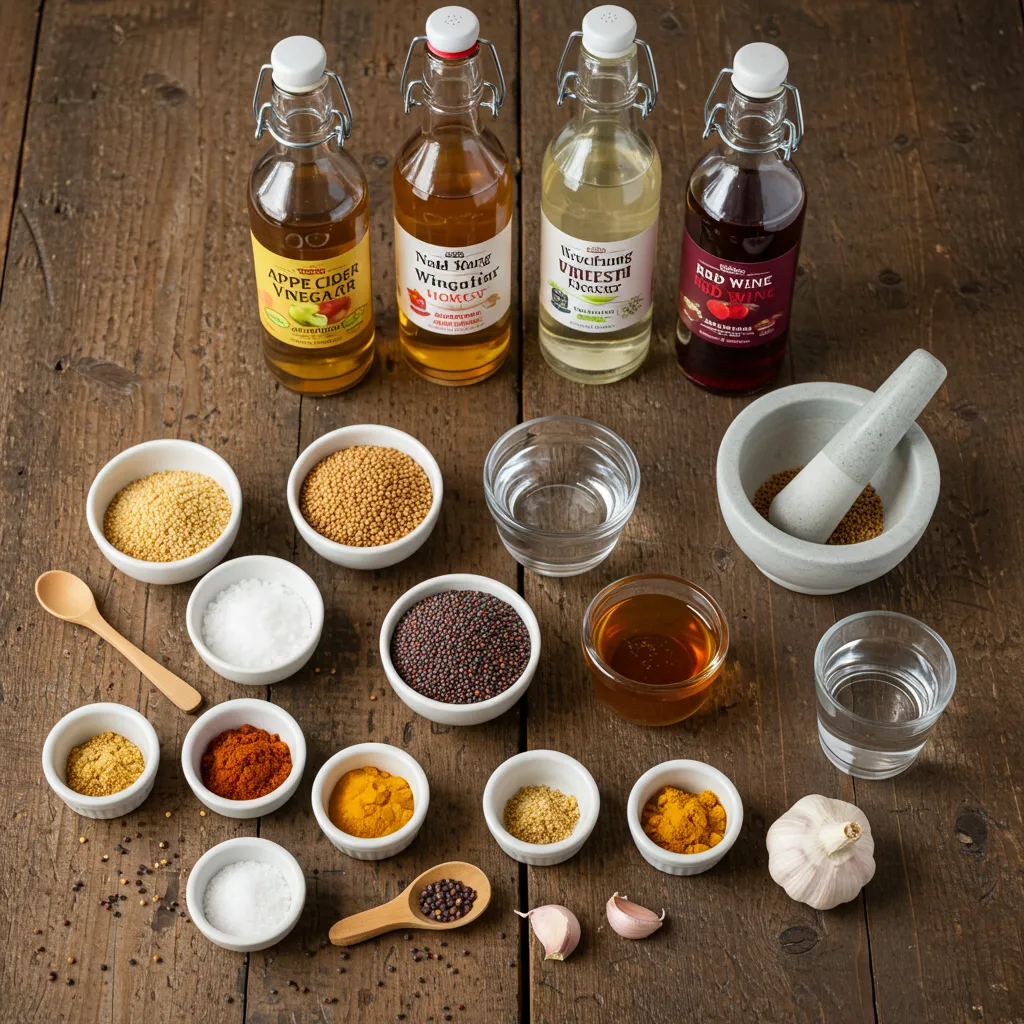
Homemade Mustard Ingredients
- Mustard seeds (½ cup) – yellow lend mild heat, brown deliver robust spice, and black bring sharp pepper notes; blend them for a richer flavor profile.
- Vinegar (½ cup) – apple cider adds mellow tang, white offers bright sharpness, and wine vinegar delivers classic Dijon depth.
- Water (½ cup) – blends ingredients and sets consistency; swap in beer or white wine for a richer Homemade Mustard profile.
- Salt (½ teaspoon) – sharpens taste and balances acidity.
Optional Flavor
- Sweetener (1 tablespoon) – honey, maple syrup, or brown sugar softens sharp edges
- Turmeric (½ teaspoon) – infuses a sunny yellow tone and mild earthy warmth
- Garlic powder (½ teaspoon) – adds layered savory depth
- Paprika (¼ teaspoon) – smoky or sweet varieties heighten complexity
- Cayenne pepper (¼ teaspoon) – increase or decrease to fine-tune the heat to your taste
Homemade Mustard: Substitutions and Variations
- Milder flavor – Boost yellow seeds and shorten the soak.
- Intensify your Homemade Mustard by boosting the brown or black seed ratio and giving the mixture extra time to rest before blending.
- Dijon style – Replace water with dry white wine, then purée until velvety.
- Whole-grain texture – Pulse briefly or leave a portion of seeds intact.
These tweaks let you fine-tune Homemade Mustard to match any palate—now it’s time to blend it all together
Homemade Mustard Step-by-Step Guide
Crafting Homemade Mustard is quick and satisfying; just follow these simple steps to turn pantry staples into a condiment fresher and bolder than anything from the store, dialing in texture and flavor to perfection.
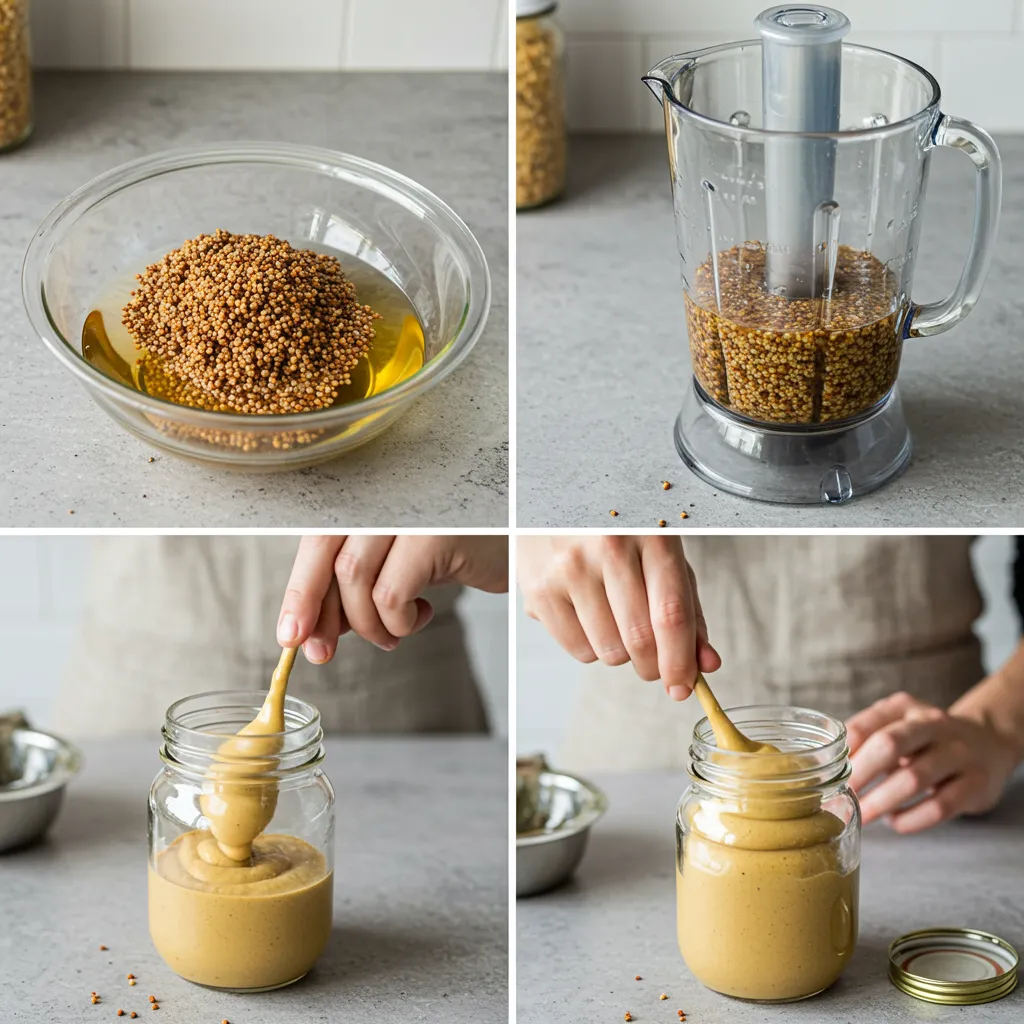
- Soak the Seeds (12–24 h) Kick off your Homemade Mustard by combining mustard seeds with vinegar and water, covering the bowl, and leaving it at room temperature for 12–24 hours to soften and develop flavor. A longer soak yields smoother, milder Homemade Mustard.
- Blend to Texture Transfer mixture to a blender, add salt plus optional turmeric, garlic, or paprika, then pulse to your preferred consistency, thinning with teaspoons of water or vinegar if needed.
- Tailor your Homemade Mustard: stir in honey or maple syrup for gentle sweetness, splash in extra vinegar for brighter tang, or dust with cayenne to boost the heat.
- Rest to Mature Spoon the mustard into a sterilized glass jar, seal, and refrigerate for at least 24 hours—up to a week for deeper character.
5. Store & Enjoy Keep your Homemade Mustard refrigerated in an airtight jar for up to one month; its flavors will continue to deepen over time.
Expert Tips and Flavor Variations for Homemade Mustard
Elevate Homemade Mustard by adjusting soak time for sharper or gentler bite, swapping vinegar with cider, stout, or white wine to shift acidity, blending in smoked paprika, citrus zest, or fresh herbs for layered depth, drizzling honey or maple syrup for subtle sweetness, stirring in cracked pepper, horseradish, or chili flakes for extra heat, and whisking a touch of olive oil for a silky finish; always chill each batch at least 24 h so flavors meld before enjoying.
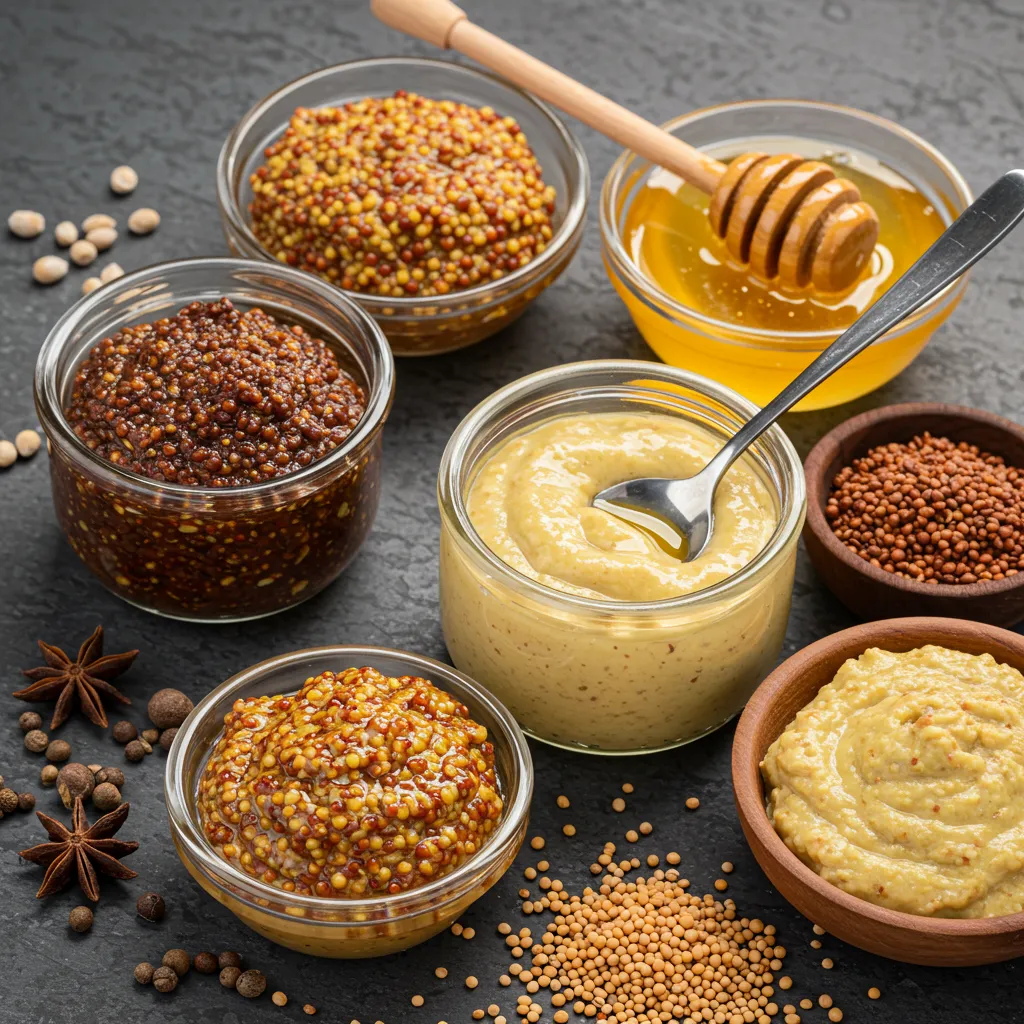
Pro Tips for Homemade Mustard
- Use fresh mustard seeds; newer seeds keep Homemade Mustard bright and punchy, while older ones taste dull.
- Adjust heat by balancing yellow seeds for mildness with brown or black seeds for extra spice until the flavor suits you.
- Let the mix rest in the fridge at least 24 hours so sharp notes mellow and complex flavors develop.
- Fine-tune texture fast—stir in water or vinegar one teaspoon at a time to thin Homemade Mustard, or pop the uncovered jar in the fridge to let it thicken naturally.
- Swap water for beer, wine, or fruit juice to give Homemade Mustard a signature depth.
Flavor Twists for Homemade Mustard
Honey-Kissed – Blend in 1–2 tbsp honey or maple syrup for a sweet–tangy balance
- Extra-Spicy – Stir in ½ tsp cayenne or minced fresh chili for bold heat
- Rustic Whole-Grain – Purée only half the mix so some seeds stay intact for crunch
- French-Inspired Dijon – Swap water with white wine and blend until perfectly smooth
- Garlic-Herb – Mix ½ tsp dried thyme, rosemary, or oregano plus minced garlic for aromatic depth
Homemade Mustard adapts to every palate—now that yours is seasoned to perfection, let’s look at tasty ways to serve it.
Serving and Storing Homemade Mustard
DIY mustard shines as a dip for pretzels, a creamy sandwich spread, or the zingy base of salad dressings and marinades; swipe it on burgers, drizzle over roasted vegetables, or fold into deviled eggs for instant flavor. Keep your Homemade Mustard in a tightly sealed jar in the refrigerator, and it will stay bold and delicious for up to a month.
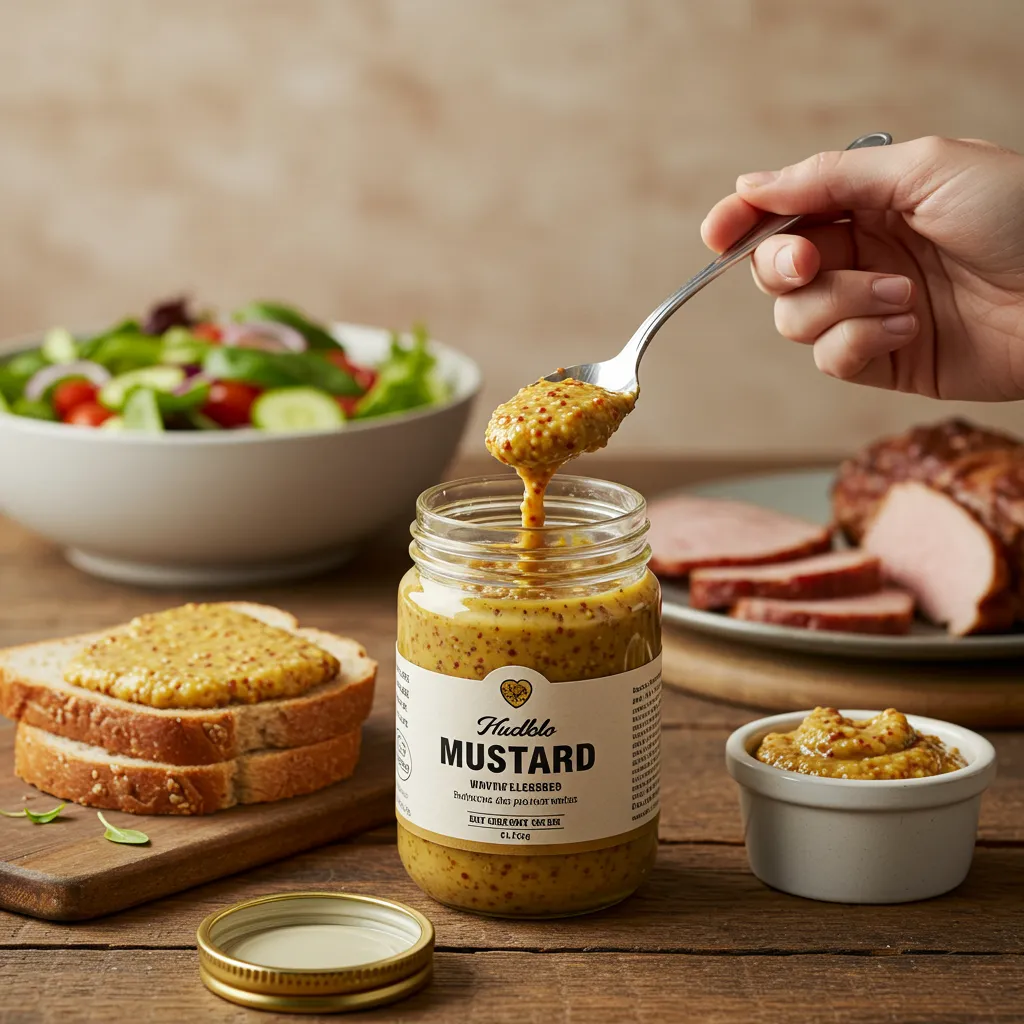
Top Ways to Enjoy Homemade Mustard
- Sandwich Savvy—cloak burgers, wraps, and deli stacks in a tangy layer of Homemade Mustard
- Meat & Seafood Booster—brush chicken, pork, or salmon before roasting or grilling for deeper flavor
- Zesty Dressings & Marinades—whisk it with olive oil, vinegar, and herbs for a bright vinaigrette or tenderizing soak
- Dip Delight—serve beside warm pretzels, roasted veggies, or crispy fries for an instant kick
- Sweet-Savory Glazes—blend with honey or brown sugar to glaze ham or roast meats with mouth-watering shine
Presentation Tips
- Showcase Homemade Mustard in a clear glass jar; its color pops and the lid locks in freshness.
- Finish with a light sprinkle of smoked paprika, cracked pepper, or minced herbs for eye-catching flair.
- Pair the jar with cheeses, cured meats, and crusty bread to elevate any charcuterie board.
Storage Tips
- Keep Homemade Mustard chilled in an airtight container to retain moisture and vibrant flavor.
- Let it rest at least 24 hours; mellowing time deepens taste and smooths sharp edges.
- Use within four weeks for peak quality, as flavors gradually fade after a month.

Conclusion
Tried making Homemade Mustard before? Share your favorite spin in the comments, then discover more DIY condiments and bold flavors on Primed Recipes.
Looking for more inspiration after perfecting Homemade Mustard?
- How to Make Tomato Sauce at Home – simmer a rich, robust sauce that complements pasta and roasted meats.
- What is Flavored Vinegar? – infuse vinegar with herbs and spices for a gourmet upgrade.
- The Complete Truffle Hot Sauce Guide — whip up an umami-rich condiment that turns ordinary dishes extraordinary.
- Seafood Boil Sauce Recipe – mix a bold, buttery blend tailored for shrimp, crab, and crawfish.
- Porcupine Soup – explore a hearty, history-rich soup bursting with savory flavor.
FAQs
1. Can I make this recipe without vinegar?
Yes—substitute lemon juice or white wine for acidity, though shelf life will shorten.
2. How do I make it spicier?
Increase brown or black seeds or add cayenne, horseradish, or red-pepper flakes.
3. Why does fresh Homemade Mustard taste bitter?
Chill 24–48 h to mellow; sweeten with a little honey or maple syrup if needed.
4. How long does it keep?
Stored airtight in the fridge, Homemade Mustard stays flavorful for about a month; aged vinegar can extend that time.
5. Can I skip whole seeds?
Yes—blend dry mustard powder with vinegar and water for a smooth spread, though seeds give deeper flavor.
6. Besides sandwiches, how can I use it?
Whisk into dressings, marinades, and glazes, brush on roasted meats or vegetables, or serve as a dip.</span>
7. Can I ferment Mustard for more depth?
Absolutely—let it sit at room temperature 1–3 days before refrigeration, using a sterile jar to prevent spoilage.
8. How do I adjust consistency?
Thin with teaspoons of water, vinegar, or beer; thicken by refrigerating the open jar for a few hours.

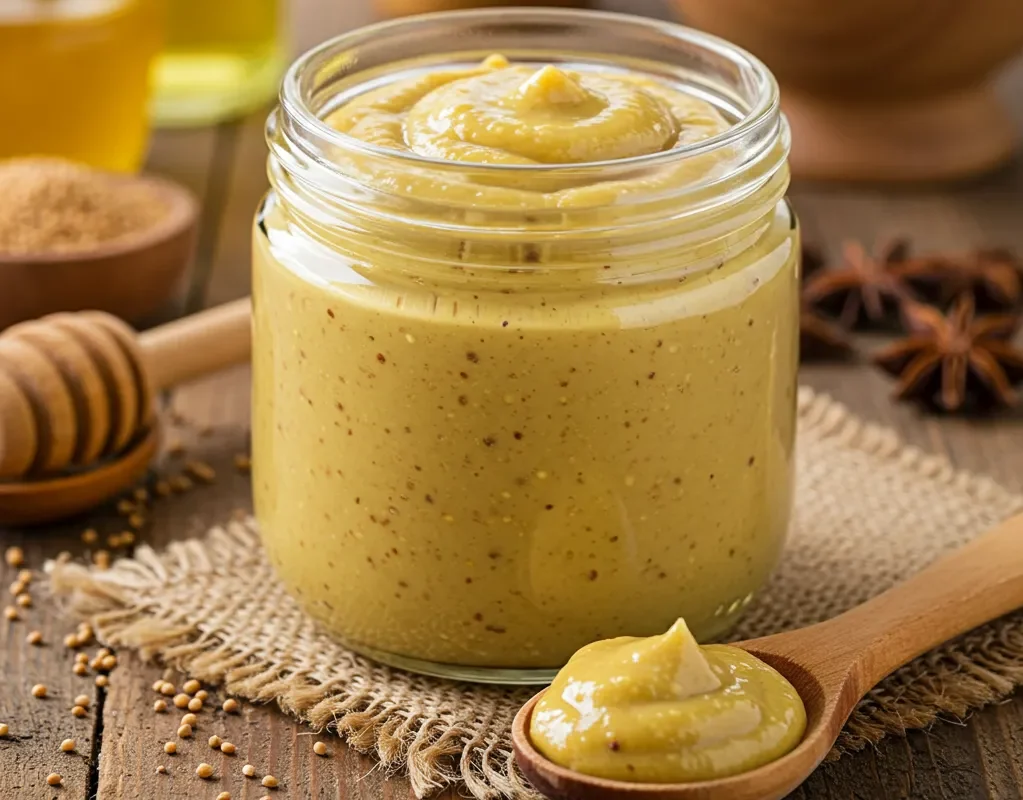
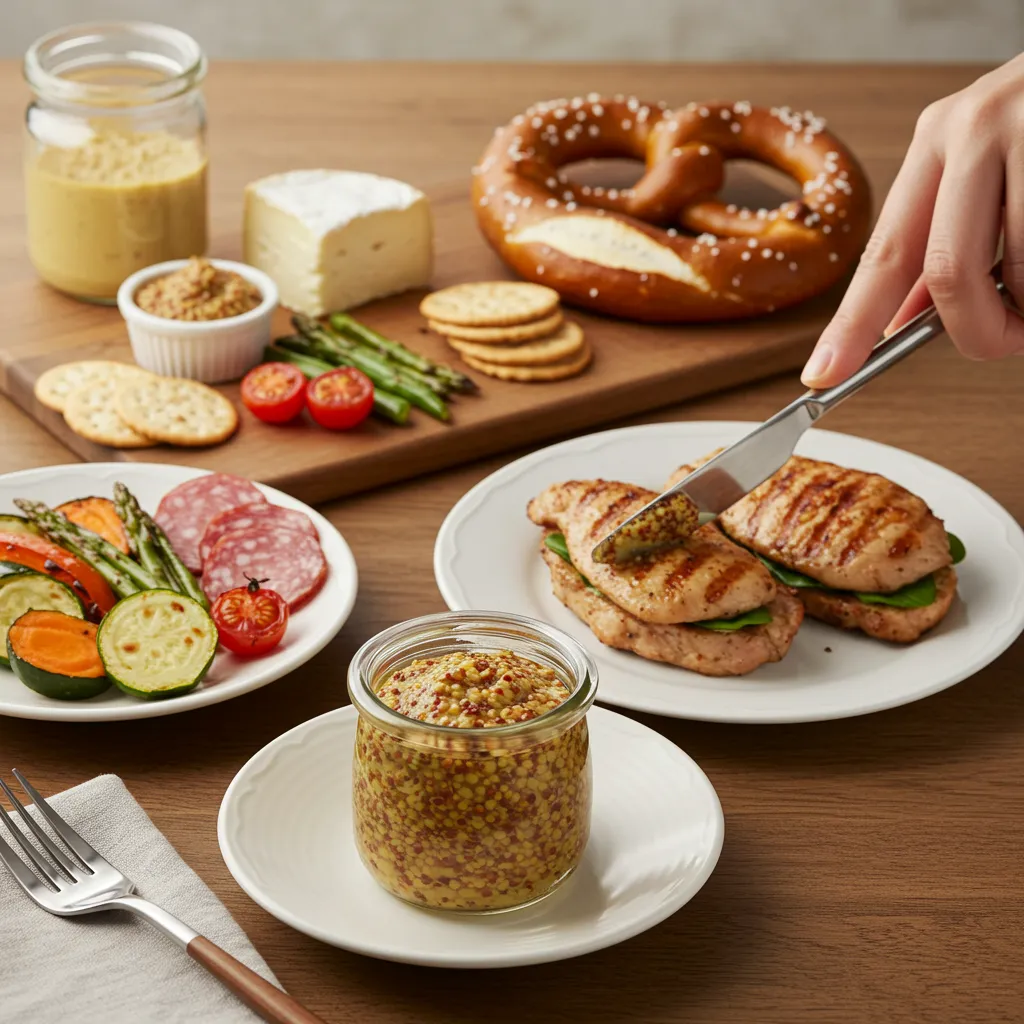
3 thoughts on “How to Make Mustard at Home”